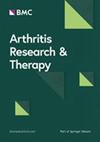Association of C4d with disease activity in anti-neutrophil cytoplasmic antibody-associated vasculitis: evidence for classical/lectin complement pathway activation
IF 4.9
2区 医学
Q1 Medicine
引用次数: 0
Abstract
We aimed to investigate the involvement of the classical/lectin complement pathway in anti-neutrophil cytoplasmic antibody (ANCA)-associated vasculitis (AAV) by exploring the complement activation fragment C4d in association to AAV activity. Forty patients with active AAV and twenty population-based controls were included. The study included 27 (67.5%) patients with a diagnosis of GPA and 13 (32.5%) with MPA. Twenty-four patients (60%) were anti-proteinase 3 (PR3)-ANCA positive and 16 (40%) anti-myeloperoxidase (MPO)-ANCA positive. Thirty-three (82.5%) patients had kidney involvement. A follow-up sample obtained after induction therapy (median 6 months) was available for 24 of the patients, of whom 20 were in remission. Plasma C4d was analysed by ELISA detecting an epitope that arises upon complement-mediated cleavage. Plasma complement factor 4 (C4) and the soluble terminal complement complex (sTCC) were analysed by ELISA. The C4d/C4 ratio was calculated. HLA-DRB1-typing and immunohistochemistry for C4d in kidney biopsies were performed. Patients with active AAV had higher C4d, sTCC levels and C4d/C4 ratio than controls (p < 0.001, p = 0.004, p < 0.001). C4d, sTCC levels and C4d/C4 ratio all decreased from active disease to remission (p = 0.010, p = 0.009, p = 0.011). C4d levels in AAV patients in remission remained higher than population-based controls (p = 0.026). Active anti-PR3-ANCA patients had higher C4d levels and C4d/C4 ratio than anti-MPO-ANCA patients (p = 0.001, p = 0.007). Patients with active AAV and kidney involvement had lower C4d levels than patients without (p = 0.04). C4d levels and C4d/C4 ratio correlated positively with the percentage of normal glomeruli in kidney biopsies. The immunohistochemistry was negative for C4d in kidney biopsies. The specific C4d assay revealed activity in the classical/lectin complement pathway in AAV, which reflected general disease activity, but was not associated specifically with kidney involvement. C4d levels differed depending on anti-PR3/MPO-ANCA subtypes suggesting differences in complement activation and underlying pathogenetic mechanisms. The findings imply that the classical/lectin complement pathway may play a more significant role in AAV pathogenesis than previously reported and that plasma C4d levels and C4d/C4 ratio may be biomarker candidates for disease activity and treatment outcome monitoring.C4d与抗中性粒细胞细胞质抗体相关血管炎疾病活性的关联:经典/凝集素补体途径激活的证据
我们旨在通过探索补体激活片段C4d与抗中性粒细胞胞浆抗体(ANCA)相关血管炎(AAV)活性的关系,研究经典/凝集素补体途径在抗中性粒细胞胞浆抗体(ANCA)相关血管炎(AAV)中的作用。纳入了40例活动性AAV患者和20例以人群为基础的对照组。该研究包括27例(67.5%)GPA诊断患者和13例(32.5%)MPA诊断患者。抗蛋白酶3 (PR3)-ANCA阳性24例(60%),抗髓过氧化物酶(MPO)-ANCA阳性16例(40%)。33例(82.5%)患者有肾脏受累。24例患者在诱导治疗后(中位6个月)获得随访样本,其中20例患者缓解。血浆C4d通过ELISA检测补体介导裂解产生的表位进行分析。ELISA法检测血浆补体因子4 (C4)和可溶性末端补体复合体(sTCC)。计算C4d/C4比值。对肾活检进行hla - drb1分型和C4d免疫组化。活动性AAV患者C4d、sTCC水平及C4d/C4比值均高于对照组(p < 0.001, p = 0.004, p < 0.001)。从活动性疾病到缓解期,C4d、sTCC水平和C4d/C4比值均下降(p = 0.010, p = 0.009, p = 0.011)。缓解期AAV患者的C4d水平仍高于基于人群的对照组(p = 0.026)。活性抗pr3 - anca患者C4d水平和C4d/C4比值高于抗mpo - anca患者(p = 0.001, p = 0.007)。活动性AAV和肾脏受累患者的C4d水平低于未受累患者(p = 0.04)。C4d水平及C4d/C4比值与肾活检正常肾小球百分比呈正相关。肾活检免疫组化C4d阴性。特异性C4d检测显示AAV中经典/凝集素补体途径的活性,这反映了一般疾病的活性,但与肾脏损害没有特异性关联。C4d水平的差异取决于抗pr3 /MPO-ANCA亚型,这表明补体活化和潜在的发病机制存在差异。研究结果表明,经典/凝集素补体途径可能在AAV发病机制中发挥比以前报道的更重要的作用,血浆C4d水平和C4d/C4比值可能是疾病活度和治疗结果监测的生物标志物候选物。
本文章由计算机程序翻译,如有差异,请以英文原文为准。
求助全文
约1分钟内获得全文
求助全文
来源期刊

Arthritis Research & Therapy
RHEUMATOLOGY-
CiteScore
8.60
自引率
2.00%
发文量
261
审稿时长
14 weeks
期刊介绍:
Established in 1999, Arthritis Research and Therapy is an international, open access, peer-reviewed journal, publishing original articles in the area of musculoskeletal research and therapy as well as, reviews, commentaries and reports. A major focus of the journal is on the immunologic processes leading to inflammation, damage and repair as they relate to autoimmune rheumatic and musculoskeletal conditions, and which inform the translation of this knowledge into advances in clinical care. Original basic, translational and clinical research is considered for publication along with results of early and late phase therapeutic trials, especially as they pertain to the underpinning science that informs clinical observations in interventional studies.
 求助内容:
求助内容: 应助结果提醒方式:
应助结果提醒方式:


